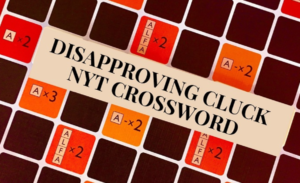
In academic and professional literature, tables serve an essential purpose by condensing complex datasets, thereby facilitating a clearer understanding for readers. For instance, table 12.2 from the publication identified by ISBN 9781071826904 is a noteworthy component of its chapter. Furthermore, it offers crucial data and comparative insights that enrich the overall comprehension of the topic. Consequently, readers can grasp the information more effectively, making the table an invaluable resource for enhancing clarity. This article aims to explore the significance of Table 12.2, interpreting its contents and its relevance to the broader themes presented in the chapter.
Although the specific details of 9781071826904 table 12.2 are not explicitly mentioned, it likely organizes key data points in a structured manner, making intricate concepts more accessible. Tables like this one distill complicated information into manageable segments, enabling readers to analyze and understand the material more effectively. This particular table may present comparisons, percentages, or various metrics that illuminate the essential ideas discussed in the chapter.
Overview Of Table 12.2 in Publication 9781071826904

The identifier “9781071826904” corresponds to an ISBN, typically linked to books, e-books, or scholarly publications. In this instance, it refers to a specific work that likely contains crucial information. 9781071826904 table 12.2 within this publication may showcase detailed data or findings related to a particular subject, providing readers with a structured way to understand that information.
Tables like this are frequently employed in academic and research environments to present intricate datasets in a clear format. They convert raw data into a more accessible layout, allowing researchers, students, and professionals to analyze it and draw significant conclusions. Such tables often include statistics, summaries, or comparisons that enhance the understanding of larger concepts.
For those interacting with these resources, the ability to read and interpret tables is vital. Whether used for academic, professional, or research endeavors, these tables deliver important insights that can inform further investigation, decision-making, or practical applications.
Understanding The Composition Of 9781071826904 Table 12.2
To effectively comprehend Table 12.2, you must analyze its organizational framework. Academic tables typically structure information clearly and concisely, featuring distinct rows and columns. Each row usually corresponds to a unique data point or sample, while the columns highlight specific metrics or variables being examined. Furthermore, this organized layout allows readers to quickly identify and compare information. Consequently, tables enhance the overall clarity of the data presented, making it easier for readers to draw meaningful conclusions. Thus, effective table design is crucial in facilitating understanding within academic research.
9781071826904 table 12.2 is likely structured according to this conventional format, incorporating several fundamental elements. The headings serve to identify the columns and rows, detailing the type of data included, such as years, population figures, percentages, or other pertinent categories. These headings are crucial for helping readers grasp the meaning of each section within the table.
Moreover, the main body of the table consists of data entries that present numerical values or statistics. These entries might reflect averages, proportions, or comparisons across various variables. To provide additional context or clarification, footnotes or references may be found at the bottom, further enhancing the reader’s ability to accurately interpret the data and derive valuable insights.
The Significance Of 9781071826904 table 12.2 In Research
Tables are essential in research for organizing key data systematically. Table 12.2 from 9781071826904 likely presents statistical findings from referenced studies or comparative analyses, showcasing significant trends or patterns. In fields like criminology, such tables may display crime rates, correlations between variables, or demographic characteristics of participants.
Enhancing Data Visualization
9781071826904 table 12.2 is crafted to facilitate a swift understanding of complex information by arranging it into clear rows and columns. This layout offers superior clarity compared to prose alone, particularly in research that involves extensive datasets or intricate relationships among variables.
Reinforcing Key Arguments
The information presented in 9781071826904 table 12.2 often reinforces the primary arguments made in the accompanying text. For instance, if Chapter 12 focuses on various crime prevention strategies, the table might illustrate the success rates of these differing methods. Moreover, this presentation not only strengthens the argument’s credibility but also promotes a deeper engagement with the presented data. Consequently, readers are encouraged to analyze the information more critically, leading to a better understanding of which strategies are most effective. Thus, the inclusion of such a table enhances both the clarity and the impact of the chapter’s overall message.
Summarizing Research Outcomes
Additionally, tables like 12.2 serve to encapsulate research outcomes. Readers can swiftly review the table to pinpoint crucial patterns or results, providing a succinct summary of the study. This feature is particularly advantageous for professionals or researchers who may not have the time to delve into the entire chapter but require a quick overview of the significant findings.
Enabling Comparative Analysis
In criminological research, the ability to compare variables or datasets is vital for drawing informed conclusions. 9781071826904 table 12.2 may offer a side-by-side comparison of crime rates before and after the implementation of a new policing strategy, allowing readers to easily evaluate its effectiveness. Such comparisons are essential for comprehending the impact of various approaches within criminal justice research.
Practical Applications Of 9781071826904 table 12.2

9781071826904 table 12.2 serves a variety of practical purposes across multiple fields, including criminology, law enforcement, public policy, and sociology. Below are some significant ways in which this table can be effectively utilized:
Academic Research
In academic settings, table 12.2 from 9781071826904 is an invaluable resource for researchers conducting case studies, quantitative analyses, or meta-studies. Scholars and students can use its data to support their arguments or compare findings from other research, effectively connecting theory to practice.
Data-Driven Decision Making
Professionals in marketing, healthcare, and public policy can use table 12.2 from 9781071826904 to inform decisions with empirical data. For example, in marketing, it may analyze the effectiveness of advertising campaigns, while in healthcare, it could display patient outcomes from various treatments.
Policy Development
Government bodies and law enforcement agencies can employ Table 12.2 to formulate effective crime prevention strategies. The insights gleaned from the data shed light on the successes and shortcomings of various initiatives, enabling policymakers to make well-informed choices regarding future efforts.
Training and Education
In educational settings, table 12.2 from 9781071826904 is a valuable tool for teaching data interpretation and informed decision-making. In criminology or criminal justice courses, students can analyze the table to identify crime trends and evaluate the effectiveness of various interventions, enhancing their data interpretation skills.
Understanding 9781071826904 table 12.2: A Guide To Interpretation
Interpreting a table effectively within academic or professional settings involves several essential steps:
Identify the Variables
Begin by pinpointing the variables or categories that the table compares. These elements are crucial for grasping the relationships and trends depicted in the data.
Analyze the Data
Examine the numerical values and statistics presented in the table.Recognizing significant variables will aid in conducting a more thorough analysis.
Observe Comparisons
Focus on how the variables are juxtaposed, whether across different time periods, demographic groups, or varying conditions. This comparative analysis can provide valuable insights and distinctions.
Relate to the Text
Connect the data from the table to the broader themes discussed in the chapter. Consider how the information enhances or clarifies theoretical concepts. Understanding these links will deepen your comprehension of the material.
Assess Statistical Significance
In contexts rich with research data, it’s important to look for statistical indicators, such as p-values, which help evaluate the reliability and validity of the findings presented in the table.
Frequently Asked Questions (FAQs)
What is the Importance of Table 12.2 in Research?
Table 12.2 is essential in research as it systematically organizes complex data, allowing readers to quickly identify key trends and insights. Its clear presentation facilitates efficient analysis, enabling researchers and readers to draw meaningful conclusions from the data.
2. How can I effectively interpret the data in 9781071826904 table 12.2?
To interpret the table effectively, identify the variables, analyze the data for patterns, observe comparisons, relate the data to the surrounding text, and check for statistical significance.
3. In what fields can 9781071826904 table 12.2 be applied?
9781071826904 table 12.2 can be utilized in various fields, including criminology, law enforcement, public policy, and sociology, assisting professionals in making informed decisions based on data-driven insights.
4. What should I focus on when examining Table 12.2?
Focus on the variables you are comparing, the patterns and trends in the data, and how the information correlates with the main arguments presented in the text.
5. Why is it important to connect the table’s data with the text?
Connecting the data with the text enhances comprehension and allows readers to understand how the findings support or clarify the theoretical concepts discussed in the chapter
Conclusion
Table 12.2 from 9781071826904 is a crucial part of academic literature, presenting complex data in a clear and organized manner. It facilitates comparisons, summarizes key findings, and supports the text’s arguments, thereby enhancing the research’s effectiveness. Proper interpretation requires understanding the variables, analyzing the data, and connecting it to the surrounding narrative. Whether in academic research, data-driven decision-making, policy development, or education, this table highlights the important role of structured data presentations in improving knowledge and encouraging informed discussions.
Stay in the know with the latest news and updates on: aljazeeraradio





